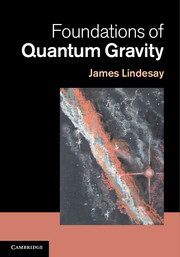Book contents
- Frontmatter
- Contents
- Preface
- Notations and Conventions
- Introduction
- Part I Galilean and special relativity
- 1 Classical special relativity
- 2 Quantum mechanics, classical, and special relativity
- 3 Microscopic formulations of particle interactions
- 4 Group theory in quantum mechanics
- Part II General relativity
- Appendix A Addendum for Chapter 1
- Appendix B Addendum for Chapter 2
- Appendix C Addendum for Chapter 3
- Appendix D Addendum for Chapter 4
- Appendix E Addendum for Chapter 5
- Appendix F Addendum for Chapter 7
- Appendix G Addendum for Chapter 8
- References
- Index
3 - Microscopic formulations of particle interactions
from Part I - Galilean and special relativity
Published online by Cambridge University Press: 05 July 2013
- Frontmatter
- Contents
- Preface
- Notations and Conventions
- Introduction
- Part I Galilean and special relativity
- 1 Classical special relativity
- 2 Quantum mechanics, classical, and special relativity
- 3 Microscopic formulations of particle interactions
- 4 Group theory in quantum mechanics
- Part II General relativity
- Appendix A Addendum for Chapter 1
- Appendix B Addendum for Chapter 2
- Appendix C Addendum for Chapter 3
- Appendix D Addendum for Chapter 4
- Appendix E Addendum for Chapter 5
- Appendix F Addendum for Chapter 7
- Appendix G Addendum for Chapter 8
- References
- Index
Summary
The fundamental “players” in the cosmological arena are microscopic particles and the interactions by which they exchange well-defined quantum numbers. Many of the critical properties of micro-physics can be determined by their behaviors in nearly flat space-time, as described by Minkowski. There are several requirements that a successful model of fundamental processes should fulfill. Among these characteristics are:
• Describes quantum phenomenology: Quantum mechanics successfully describes the subtle behaviors of matter and energies undergoing microscopic exchanges. Quantum behaviors inherently have aspects beyond measurement.
• Conservation properties: Most particles have internal quantum numbers, like charge, lepton number, baryon number, etc., that are carried undiminished throughout complicated interactions with other particles. In addition, they carry properties like mass and spin, whose kinematic transformations under space-time transformations are well-defined, and which satisfy composite conservation laws (energy, momentum, angular momentum) for sufficiently isolated homogeneous and isotropic systems.
• Unitarity: Despite being unable to follow quantum coherent particle properties while that coherence is maintained, the evolution of those properties is described in a manner that ensures conservation of probability. This means that these properties do not just “pop” into or out of existence between the detections and interrelations of the particles.
• Cluster decomposability and classical correspondence: Classical physics is quite successful in describing much of common phenomenology. Classical models exploit those characteristics of a system that can be isolated, studied, and parameterized independent of observation.
[…]
- Type
- Chapter
- Information
- Foundations of Quantum Gravity , pp. 101 - 138Publisher: Cambridge University PressPrint publication year: 2013

